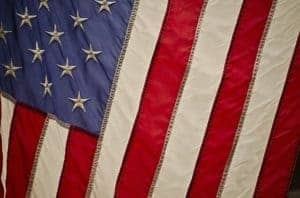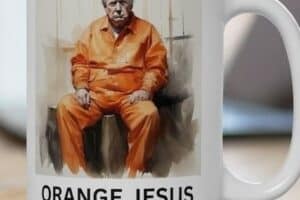An interesting perspective from Maggie, a DC native: “I am white but part of my soul is black. I grew up in DC, which was then nicknamed “Chocolate City.” When I was young, I was told certain things that are now disturbing to me, like slaves were happy to be slaves. At the time I was too young to know about systemic racism. I did not understand this and today in contrast, I have a different perspective on xenophobia. The word and concept of Slavery equals bondage, captivity, oppression, and servitude and is the opposite of freedom. Why would anyone be “happy” being a slave? What a lie we were told. I should have asked the person at that time, would you like being a slave yourself? When I was young, I also clearly remember the chants of “White Power” in the 1960’s and 70’s. After the 1968 DC riots, I recalled hearing the chants of “Black Power” and the names of black American leaders such as Stokely Carmichael and Malcolm X.”
The 1960’s were beset with political murders including the Kennedy’s, Martin Luther King, Jr. and Malcolm X. It became the era of the birth of Black Power, the Black Panther Party, and the Student Nonviolent Coordinating Committee. The Black Panthers stood out because they emphasized racial pride and utilized open carry laws to protect party members and local black communities from law enforcement. Yes, unjust law enforcement. They dressed in black berets and black leather jackets and sought to challenge police brutality against the Black American community by forming armed citizen patrols. They urged them to focus on economic, social, and political power. One of their goals was to get more Black Americans elected to political offices. Although sometimes perceived as violent and disruptive, the Black Panthers started many community social programs, including free breakfast for inner-city school children and free health clinics in black communities. After becoming targets of FBI investigations, the Black Panthers’ organization was dissolved in 1982.
The Black Power movement of the 1960’s represented the struggle for civil rights and racial equality. It was a time of unrest and, at times, a vicious fight for parity. There is no mistaking that the symbol for the Black Power movement of the 1960’s is the same as that of the Black Lives Matter movement of today. The clinched black fist still represents the protest against police violence and oppression as it did in the 1960’s. The Black Lives Matter crusade against racism is one of a dramatic show of resistance and has been a sign of non-violent protests in the streets and in sports arenas. The Black Lives Matter movement is a response to and grew out of the senseless 2012 Florida killing of Treyvon Martin by an angry self-proclaimed neighborhood watch white person who was never convicted of his crime. Additionally, the call for “Hands up, don’t shoot” began following the pointless police killings of Michael Brown in Ferguson, MO and Eric Garner in New York City in 2014. And the list goes on…
Following the 1960’s and 70’s, resistance to racism continued but none like that which followed the recent senseless death of George Floyd at the hands of police. Many had forgotten the struggles of 50 and 60 years ago because it did not directly affect them. After the death of George Floyd and the protests across the country, it is hard to turn one’s head and ignore the impact of this current movement. This black and all lives matter movement is not going away and has drawn blacks, browns, whites, reds, and yellow people together for one voice. What was started in the 1960’s, and long before that, laid underground while waiting for the right time to reemerge as stronger and more successful. It is clear that this movement is not going away and it shouldn’t.
Because institutional racism, also known as systemic racism, is deeply embedded in our society, it has become the norm. Now, as Confederate flags, statues, icons and, images which are symbols of those unjust actions, including slavery, are being removed, it is time to take a stand. Slavery was not a happy time and it was not by choice. That happy theory was created to make the white slave owners, supporters of slaves and slavery, feel better about their actions but did nothing for those enslaved. It is a known fact that many government buildings, including the US Capitol, the White House, and Georgetown University were built with slave labor. Buildings in Florida, Massachusetts, New York, North Carolina, South Carolina, and Virginia were built by slaves. Stone was quarried by slaves for many other buildings. Yet, those are the people who had to sit in the back of the bus, had to drink from a different water fountain, and use different or no bathrooms at all. They were our maids and gardeners and were wet nurses for white people’s babies. And that was okay to us? Really! Something is wrong with this picture and, as white people, we have to work to correct it.
As monuments to slavery and the struggle are perched in parks across this nation, we debate their fate. The Emancipation Memorial in Lincoln Park in DC is one of those that depicts Abraham Lincoln with an African American slave. With a notable clinched, black fist, the freed slave is shirtless with broken shackles and on one knee at the President’s feet. We ask, is this a part of this nation’s history or something that should be destroyed? Our opinion, although it may be controversial, is that some offensive monuments should be taken down and placed in a museum for historical purposes. If we face the past, we then have the possibility of learning from it and moving on. By doing so, we cannot act like it did not happen. If we destroy these images, our children, both white and dark skin, may have little to learn from history. Frederick Douglass, an abolitionist and reformer who moved from slavery to freedom, felt that photography was very important at the time in ending slavery and racism because it did not lie. Do these monuments not hold the same value?
The statue on top of the US Capitol Dome, where Congress sits, is called the Statue of Freedom for a reason. Are you aware that it was made by a slave named Philip Reid? Wall Street was named after an actual wall which was built by slaves. There was also a slave market on Wall Street. Slaves helped build Trinity Church in New York City and the slave owners were paid for their work. So, don’t tell us that slaves enjoyed being slaves. Don’t lie to us anymore. We all deserve the truth. And remember to do what you can for those who cannot.
“Knowledge is the pathway from slavery to freedom.”
Frederick Douglass



